Putting yourself in your customer’s shoes to offer them an incredible customer experience is essential. When you look at your website from a visitor’s perspective, you might notice that your banner graphic doesn’t look professional, your copy has typos or your images don’t really pop. This can really take away from their shopping experience.
Does your website look and feel as professional and trustworthy as websites that sell similar items, from a customer perspective? Looking at your online store objectively helps you improve your store’s weaknesses points which can lead to increased customer trust and increased sales.
Who is your customer? What do they like? What types of products do they need? What type of content do they read or watch?
Ensure that you cater your brand to your customers. You need to have a customer understanding of their needs. And as a store owner, you need to prioritize their needs. Getting feedback on the customer experience to know how to better serve them allows you to create a customer centric brand. The better your customer experience, the more likely it is that they’ll keep returning to your store.
If you don’t have customers, you won’t be getting feedback from them. So your approach should be on determining who your audience is. In our Facebook ads section, you can learn more about how to find your audience with data. So feel free to jump ahead to that section next.
Example: Steve Jobs former CEO of Apple has said, “we put ourselves in the customer’s shoes and ask: What do we want?” It’s a big part of what led to Apple becoming one of the most popular brands with strong customer loyalty.
Customer Experience Tips:
Harvey Nichols gives their customer support team a better name: Stylists. The Stylist’s job is to help the customer hunt down the right item. If they’re stuck, they can use the form. On the form, they’ll share their name, email and phone number and their question. The form is tied to the exact product. So if a customer is looking for accessories to pair with a specific dress, the Stylist will know which dress needs the accessories.
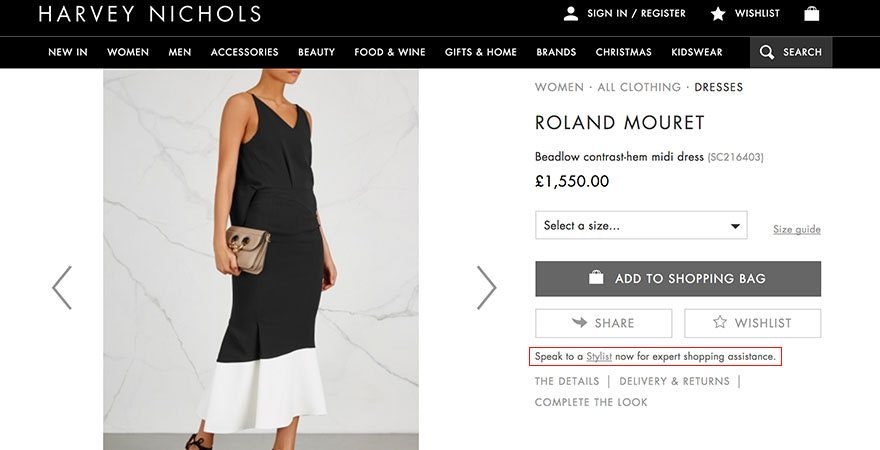
Regularly read the emails your customer support team receives – are there any issues that keep coming up? If your customer support team is large, you can ask them to send you a list of the general concerns and feedback. Similar complaints can be grouped together and unique ones can also provide better clarity into your customers’ needs. After understanding the main issues your customers are having, focus on finding the solution for them.
If you don’t have customers yet, you can get their feedback by adding a live chat on your website. Visitors can chat with you to ask questions about the products. You might also learn what issues they’re facing. For example, if someone asks your live chat for a discount code, it’s possible that your pricing is too high. And if you have high abandoned carts but no sales, this can help you understand what changes need to be made.
Email your customer list once every 6 months-1 year. Ask them how you can improve their shopping experience on your website. Let them know you’ll listen. Then, consider making changes based on their feedback. Add products they’d like to have. Find a new manufacturer or supplier if they’re unhappy with the product quality. Improve your product copy based on feedback you receive from customers to be more transparent.
Show your customers appreciation. Write personal thank you cards when they order from you. Offer them VIP deals. Surprise repeat customers with a free gift for fun if they hit a minimum purchase threshold. You can access this data on your most profitable customers in Shopify’s customer reports. The more you give to your customers, the more you’ll get back from them. Be grateful to the people who’ve believed in your brand and helped make you a success.
Solve your customers’ burning problems. Are there relevant problems within the niche that have yet to be solved? How can you improve your product to solve other problems? But it even goes beyond the products themselves. Maybe your competitors don’t offer free shipping or don’t respond to customer inquiries. The problem you solve might be more about customer service accessibility rather than the product itself.
Do what your customers do. Do your customers attend certain events? Are there experiences that they like trying? Do they spend their time on certain Facebook groups or forums? Be where your customers are. Listen to what potential customers’ complaints, issues and passions are. Get to know them without the intent to sell. The more market research you can do, the better you can serve your own customers.
Respond to your customers in their language. If you can speak multiple languages or are really handy with Google Translate, respond to customer inquiries in the language they’re sent in. Most brands tend to either ignore comments in foreign languages or respond in their own language. However, exceptional customer service means communicating with your customers in a language they’d understand. If you’ve ever visited Mickey Mouse at Walt Disney World Resort, you’d know that Mickey regularly says hi and communicates in different languages. It’s this level of attention to detail in customer service that makes Disney one of the best brands in the world.
Engage with your customers beyond just broadcast channels. Whether it’s through live chat, Facebook messenger, or through other social media outlets, get to know who your customers are. If you notice regular engagement from certain customers, build relationships with them by responding to their messages.
Create buyer personas. Many top brands have one buyer persona that they focus on targeting. However, your customers are likely much more diverse than that. Have several different buyer personas that you select products for, create content for and market to. Your customers have different needs that you should be trying to meet, don’t lump them all into the same category.
Add a ‘Share Your Ideas’ section like The Iconic to let your customers decide what features or perks your brand should offer. Other customers can upvote the ideas they like to encourage your brand to take action sooner.
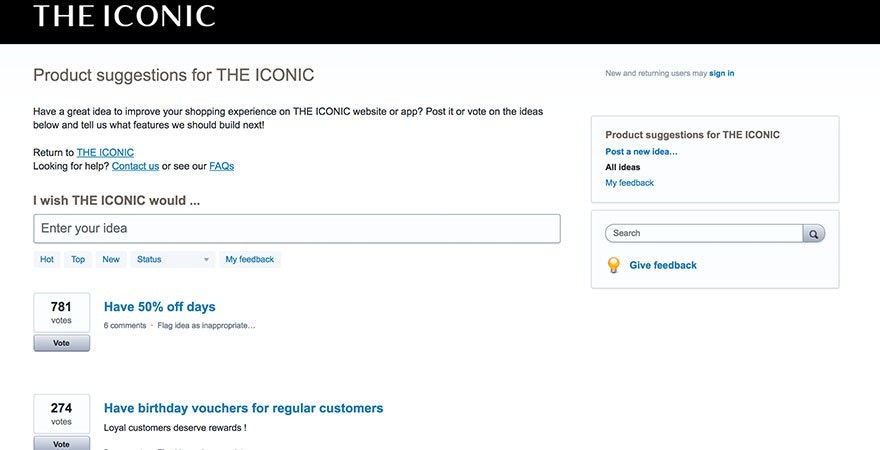
Analyze your customer data. What countries, cities and states do most of your customers live in? How do they navigate your store? How many times did they visit your website before making a purchase? What pages do they tend to look at before finalizing their purchase? By looking at your customer data you’ll be able to make strategic decisions to help you better serve them. Whether it’s offering lower shipping rates to popular countries or improving your site navigation, data will allow you to improve your shopping experience.
Focus on improving aspects of your store based on customer interaction and how your customer navigates it. You can improve your product selection based on customer search inquiries. You can turn off pop-ups on mobile devices if they’re intrusive. Hiring a stellar customer service representative who will go above and beyond to meet the demands of your customers can also help you better understand your customers and strengthen your relationship with them.
Most entrepreneurs believe in giving their customer a great experience. However, customer service isn’t only the entrepreneurs’ or customer support team’s job. You’ll have other public facing staff that also need to ensure they offer a spectacular experience to customers. Maybe it’s an employee representing your company at a tradeshow, the content marketer on your blog or the person improving your store’s navigation. Each person at your company should be responsible for offering your customers the best online shopping experience. It’s your responsibility as a store owner to ensure they’re trained well for it.
Telling your employees or virtual assistants to offer great customer service isn’t going to make them offer great customer service. You need to set guidelines and provide examples of what exceptional customer service means. For example, you could provide a guideline for response time for social media inquiries (such as within the hour). Hold a meeting where you ask all your employees to help compile a list of things each person could do within their role to improve the customer shopping experience. Each week have employees share examples of things they did to go above and beyond. By doing this each week, you can start raising the bar for excellent customer service across all employees.
The biggest mistake store owners make when it comes to customer service is trying to win the argument. You’re not going to. The customer isn’t always right but that doesn’t mean you tell them that they’re wrong. Giving a refund is better than getting a chargeback. Losing one sale is better than losing that customer.
As your online store starts growing, customer support teams start automating their service. We’ve all gotten that canned response email that doesn’t solve our problem. Personalized customer service should never end. Treat your 1000th customer like your first. Answer each email personally. Give them the exact answer to their question. Your customers are giving you their most prized possessions: their attention and their money. The least you could do is spend the time to answer their exact question.
Customer Experience Tools:
Peek User Testing is a great free tool where someone critiques your new online store, both desktop and/or mobile versions. Unlike your close friends and family members, these users will be honest and point out issues that you should change. If you recognize that their feedback is valid, focus on fixing it immediately. You can pay a small fee to receive a more in-depth review of your website from an objective third-party to better understand how you can improve your store.
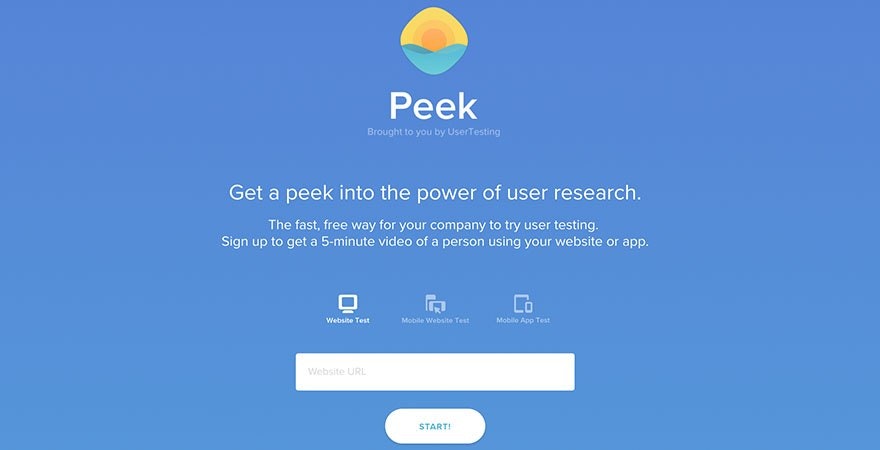
Foresee is a customer experience analytics tool that top brands like the Disney Store use. You can add a survey pop-up to your store that randomly shows up at different points in the shopping experience and to different customers to get a better understanding of what your customers think of their shopping experience. You can also use their digital replays to watch your customers browse through your online store to get a better understanding of how your customers navigate your website.
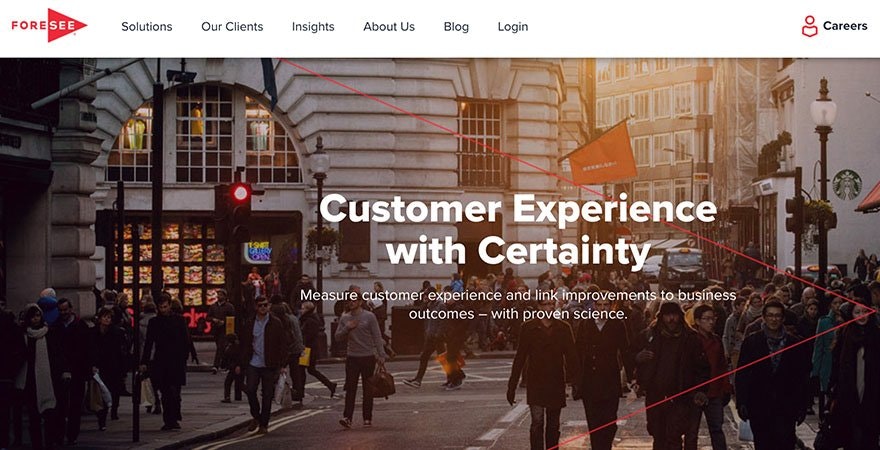
User Echo allows you to host a customer forum where your customers can upvote suggestions so that you can prioritize their needs. It also allows you to add a live chat and help desk so that you can provide more efficient customer service to your customers.
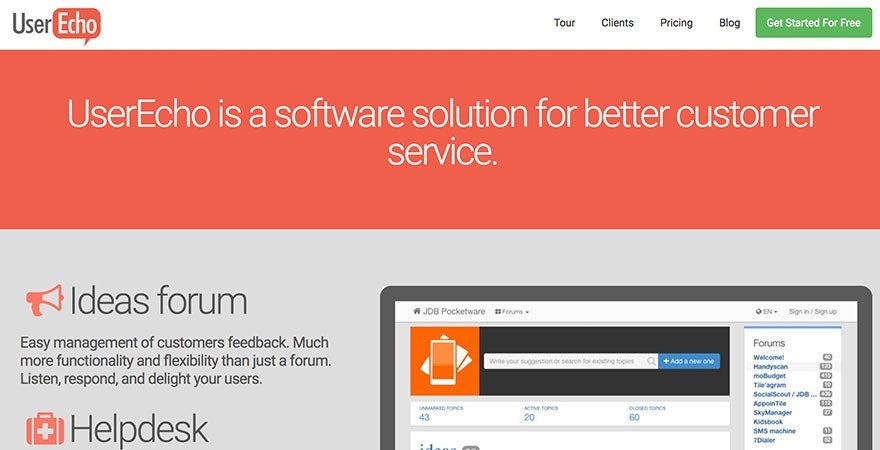
Qualaroo is a real time feedback platform used by Shopify and Groupon that allows you to target specific audiences based on a variety of parameters so you can understand who your web visitors are and what prompts them to make decisions. You can create cart abandonment surveys to understand why people aren’t converting, brand discovery surveys to understand where visitors are coming from and more.
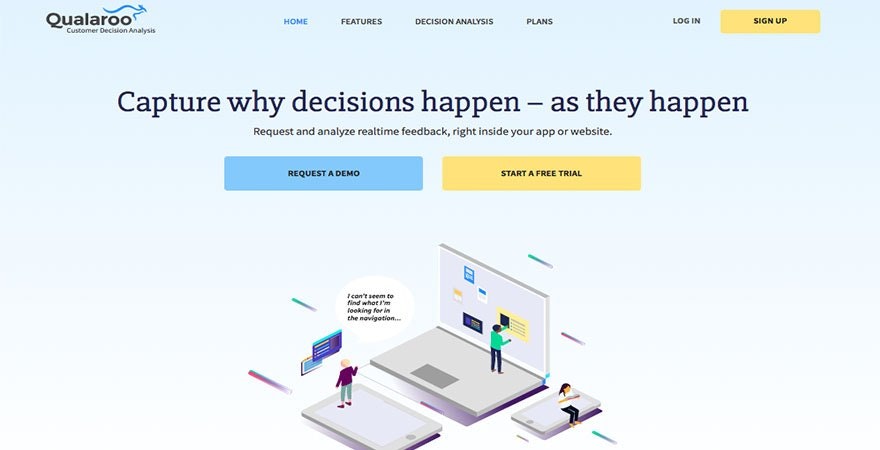
Lucky Orange is a customer analytics tool that allows you to view customer recordings of their shopping experience on your website and heat maps. You can view the customer experience for those who converted and those who didn’t to better understand what helps increase conversions on your store. With the recordings, you’ll view the entire shopping experience before checkout where you can view which pages your customer browsed before purchasing or exiting your online store. Lucky Orange’s heat maps can also help you understand where your customers click and how they navigate your website.

Hot Jar is another great tool for understanding customer browsing behavior. You can view click heatmaps to know where your customers are clicking on your store pages. For example, if you notice that most of your customers are clicking somewhere other than a buy now button you’ll know where to remove the distractors on your product page. Like Lucky Orange, you can also view visitor recordings. This allows you to see how customers are navigating your website. You’ll learn from watching several videos if there are any changes you need to make to improve the customer navigation experience. You can also find data which will help you improve your store’s online forms, run feedback polls, and more.
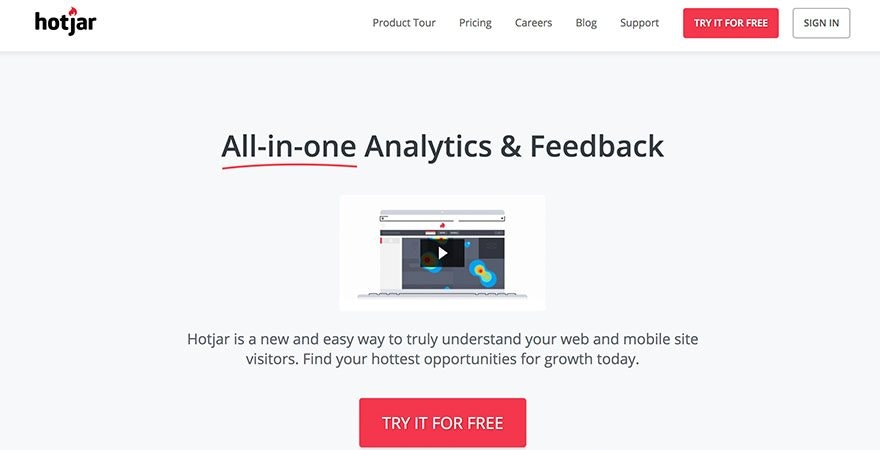
Survey Monkey is a great tool for both new store owners and experienced entrepreneurs who are looking to survey their customers to better understand their needs. You can have surveys sent out after your customer makes a purchase or a few weeks after they’ve received their product to find out what they thought about their shopping experience. You have the freedom to ask any question you’re interested in knowing the answer to. Creating multiple choice questions makes the survey easy and fun for your customers to help give you the feedback you need.

Usabilla allows you to improve your user experience and increase conversions with their customer feedback tool. You can add a Feedback button on your website that allows your customers to leave store feedback with you at anytime. You can also create exit surveys, choose from a range of targeting options and easily analyze the feedback your customers leave.
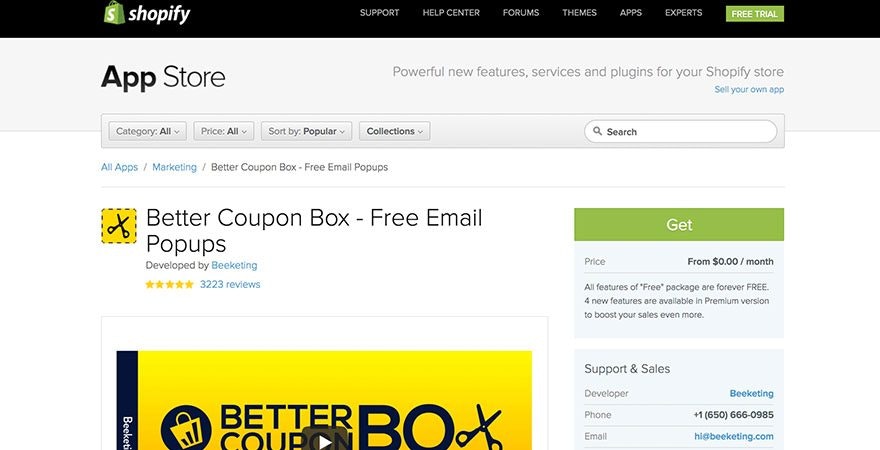
Google Analytics allows you to get an inside look at who your customers are. When it’s installed on your store, you’ll learn your customer’s gender, location, age, interests, browsing behaviors and more. This paired with Shopify’s reports can be an eye-opening experience for store owners.
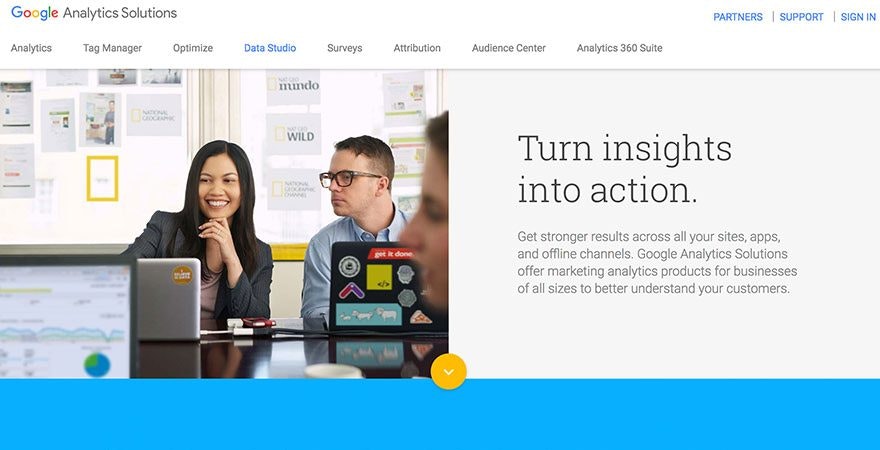
Medallia allows you to calculate your net promoter score to help understand how satisfied your customers are. A Net Promoter score is a number provided that tells you how likely your customers are to promote your brand. Detractors are unhappy customers who aren’t likely to promote your brand and may be damaging to it. Passives are those who are neutral to your brand but aren’t loyal. Promoters are your raving fans who actively promote your brand, make repeat purchases and love your products.
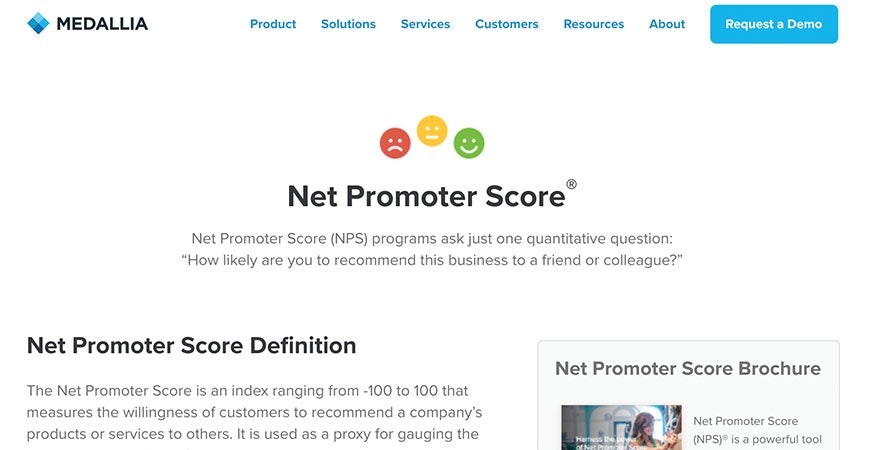
Resources:
Userlike’s How to Identify Customer Needs and Expectations is a great resource that allows you to better understand how a customer’s wants, needs and expectations can help influence their purchase behavior. It highlights how to collect customer feedback, ways to gain insights into customer metrics and more.
Omnistar’s 8 Ways to Improve Ecommerce Customer Experience helps you understand ways to make your customers more loyal by improving the customer experience. You’ll learn how to enhance the customer checkout process, how to personalize the customer experience and ways you can improve the shopping experience for your customers.
Search Engine Watch’s Guide to Google Analytics Demographic Reports: Age, Gender, Interests takes a look at what type of insights Google Analytics provides you with and how to make sense of it. This is a great resource for beginners who are looking for a basic understanding of Google Analytics demographic reports.
Shopify’s How to Build Buyer Personas for Better Marketing dives into why you should create buyer personas, the details your personas should include, how to research your buyer personas, and more.
Dummies’ How to Analyze Customer Data for Data Driven Marketing discusses the different segments your audience belongs to. It then details how to measure results.
Disney Institute’s Be Our Guest: Perfecting the Art of Customer Service details what Disney does differently in terms of customer service. You’ll learn the strategies and guidelines Disney uses to ensure that the thousands of Disney employee offer the best customer service experience every time.
Customer Service Influencer:






